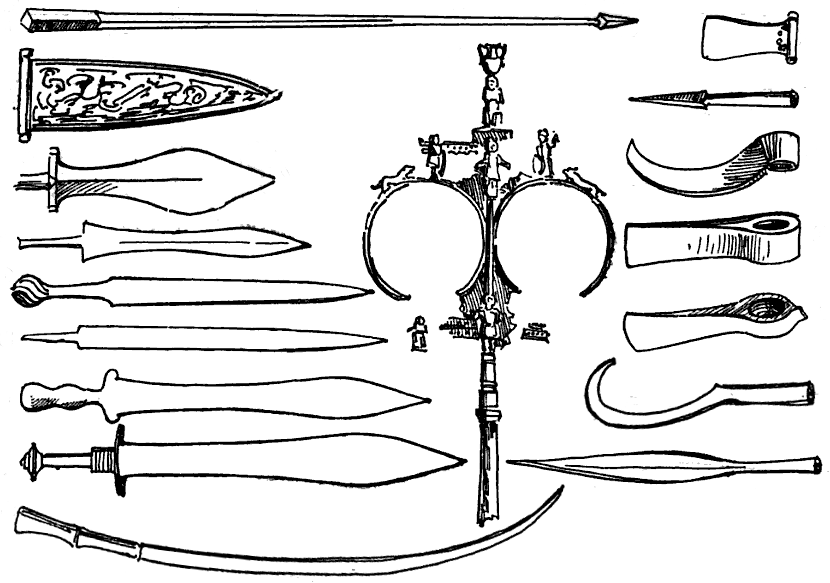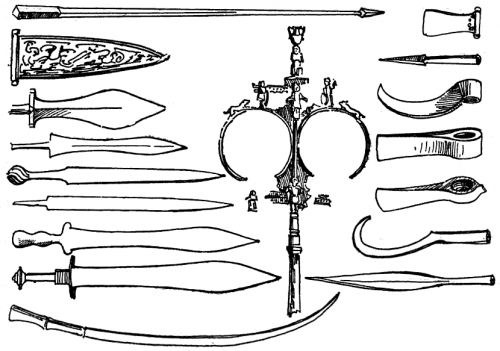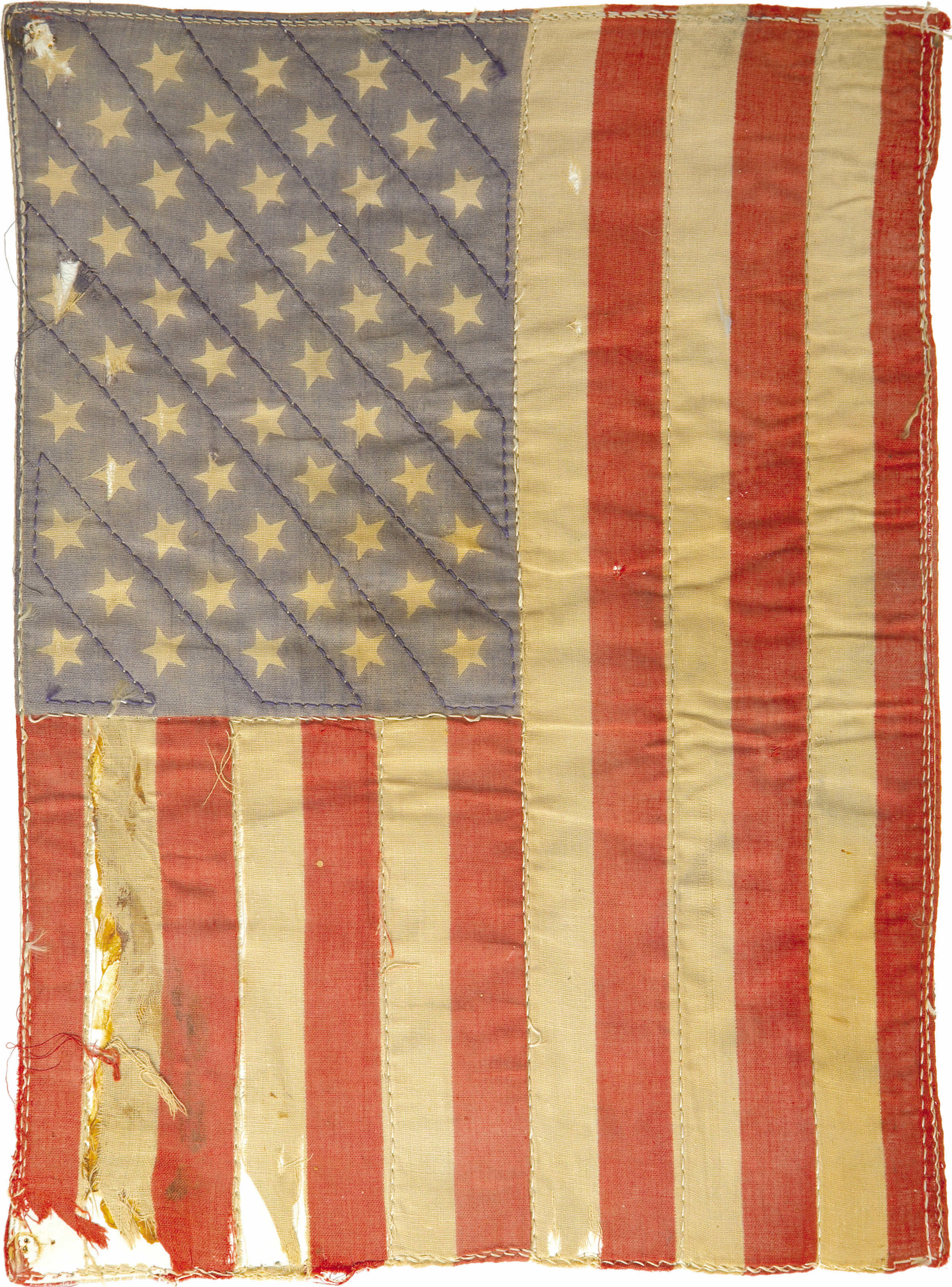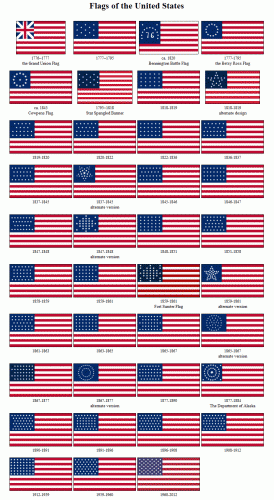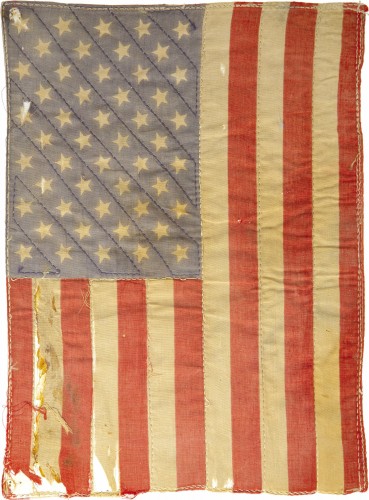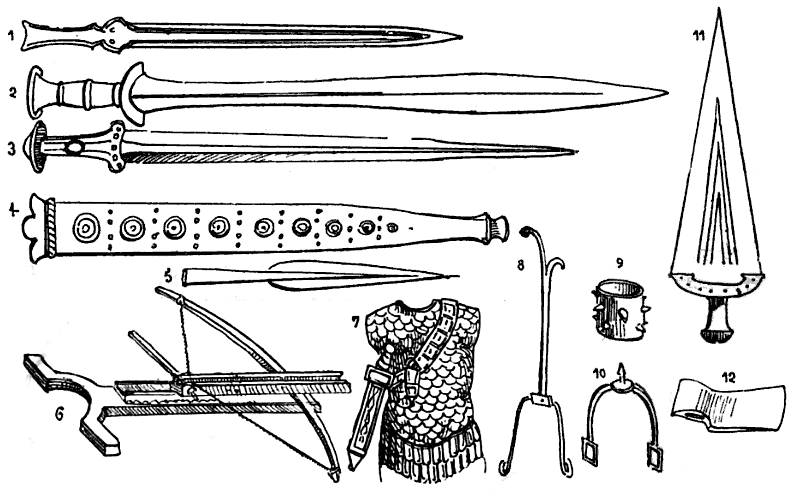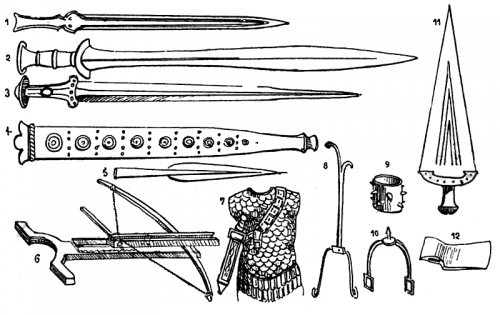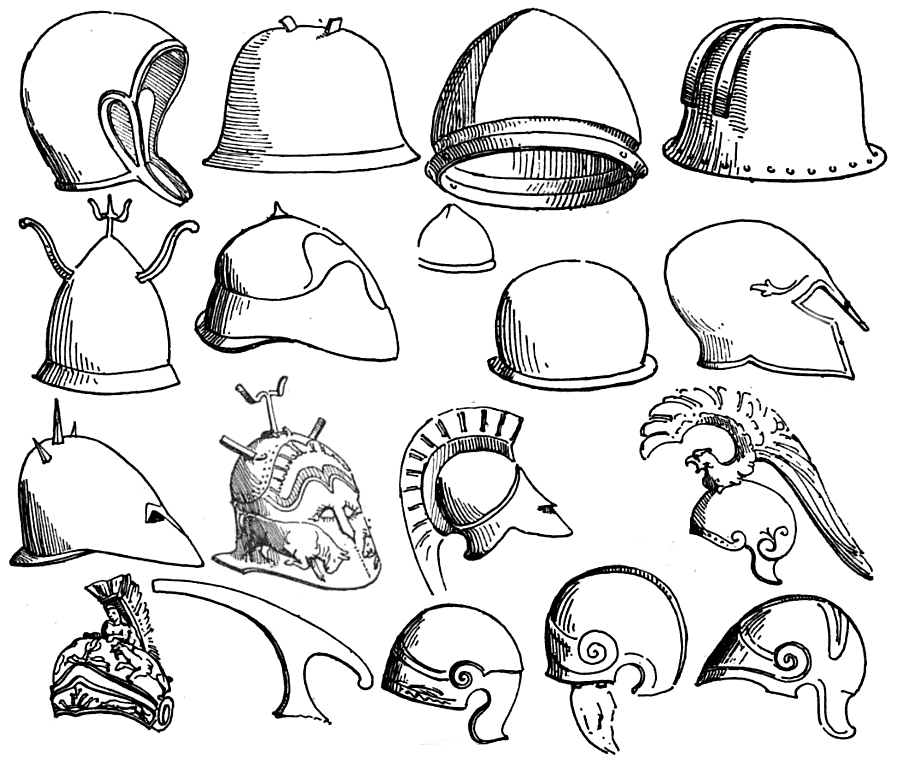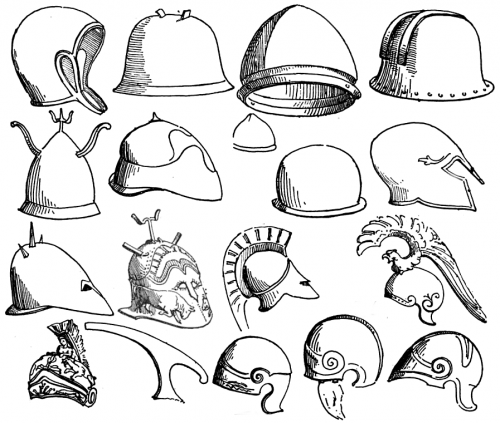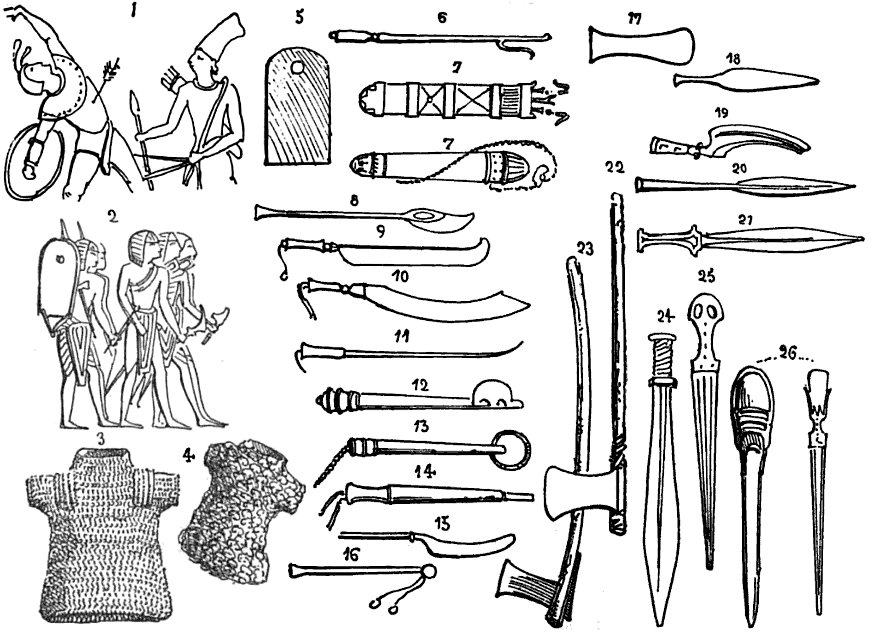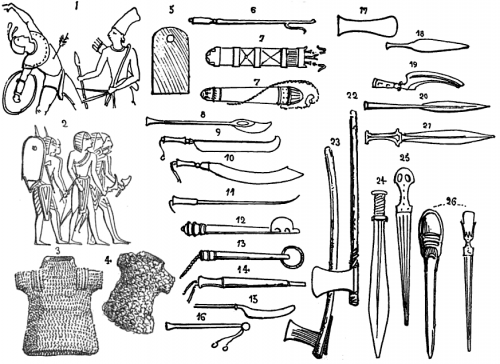In the same vein as my previous posts on Ancient Egyptian weapons and Ancient Greek helmets and weapons, here is an illustration of common weapons used in Ancient Rome.
Left column, from top to bottom:
- Iron head of Roman pilum.
- Bronze sheath for sword below.
- Sword worn with belt called a parazonium, 10 inches long, iron.
- Short sword called a poniard, bronze.
- Sword, 22 inches long, iron.
- Sword, 25 inches, long, iron. This particular example has an armorer’s mark of Sabini.
- Sword, 23 inches long, iron.
- Sword, 26 inches long, iron. Hilt is ornamented with bronze
- Dacian sword. From Trajan’s Column erected in 113 CE.
Center: Signum, or badge, or Roman cohort, bronze. Found in Asia Minor.
Right column, from top to bottom:
- War-hatchet, iron.
- Head of javelin, 6 inches long, iron.
- Bill, bronze. This particular example was found in Ireland.
- Plain war-hatchet, bronze.
- Plain war-hatchet, bronze. It’s shape shows it is a weapon, not a tool.
- Bill, iron. From the ruins of Pæstum.
- Head of javelin, 11 inches long, iron.
The illustrations and descriptions have been taken from An Illustrated History of Arms and Armour: From the Earliest Period to the Present Time, by Auguste Demmin, and translated by Charles Christopher Black. Published in 1894 by George Bell.

